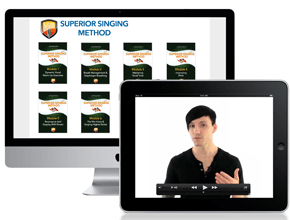Fear of public speaking is nothing new. Remember the feeling you had when you made presentations at school? How do you feel when entering a full room of strangers? The mouth suddenly becomes dry, the stomach tenses and your heart races. We can all have these feelings at various times of our lives.
Contrary to what we may think, a high percentage of people suffer from these symptoms when confronted with forms of social exposure. In extreme cases it can lead to great anxiety disorders and panic attacks.
This also comes to play in different environments: professional, family and / or friends. Many people who are experts in their fields of work, may have specializations like master’s or doctorate, but when it comes to exposing their knowledge, the fear of speaking in public or even openly kicks in, and they become shy or insecure. This is the reason, the improvement of the communication process is recommended to all who are interested in developing their personal and professional live.
2. Learn to love and take care of yourself. Enjoy your way of being and relating to others. Treat yourself and do things that make you happy. As the well-known saying goes: If you do not like you, no one else will.
3. Relieve anxiety through breathing. A simple technique is to make a few deep breaths, focusing only on your breathing. Breathe in and out slowly, counting 1, 2, 3, 4 feeling the air to enter and feel of your lungs. This simple exercise will help you feel more calm and relaxed.
4. Focus on in other people and interact with them. Do not focus on your nerves in social situations.Focus instead on what is happening, what people say, how they behave and remove any pleasure in it.Stay interested in the characteristics of other people and debrief on what that person likes.
If you want to receive tips on Public Speaking, subscribe to my newsletter and check out professional techniques that will assist your speech and singing voice.
Contrary to what we may think, a high percentage of people suffer from these symptoms when confronted with forms of social exposure. In extreme cases it can lead to great anxiety disorders and panic attacks.
Fear Of Public Speaking In the Business World
The business world demands professionals who are increasingly prepared with various skills. Speaking well, with security, elegance and naturalness in any situation is essential. It is through verbal communication that we maintain a greater number of daily contacts: lectures, courses, meetings, messages, chat, orders, counter-orders, etc.This also comes to play in different environments: professional, family and / or friends. Many people who are experts in their fields of work, may have specializations like master’s or doctorate, but when it comes to exposing their knowledge, the fear of speaking in public or even openly kicks in, and they become shy or insecure. This is the reason, the improvement of the communication process is recommended to all who are interested in developing their personal and professional live.
4 tips to overcome fear of public speaking:
1. Know your strengths. We all have qualities that set us apart. Know and accept their strengths is key to increasing their self-esteem and improve your self-image.2. Learn to love and take care of yourself. Enjoy your way of being and relating to others. Treat yourself and do things that make you happy. As the well-known saying goes: If you do not like you, no one else will.
3. Relieve anxiety through breathing. A simple technique is to make a few deep breaths, focusing only on your breathing. Breathe in and out slowly, counting 1, 2, 3, 4 feeling the air to enter and feel of your lungs. This simple exercise will help you feel more calm and relaxed.
4. Focus on in other people and interact with them. Do not focus on your nerves in social situations.Focus instead on what is happening, what people say, how they behave and remove any pleasure in it.Stay interested in the characteristics of other people and debrief on what that person likes.
If you want to receive tips on Public Speaking, subscribe to my newsletter and check out professional techniques that will assist your speech and singing voice.






















